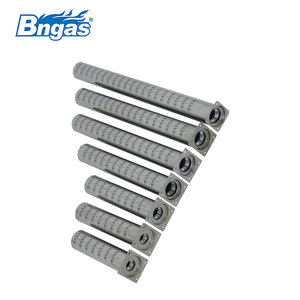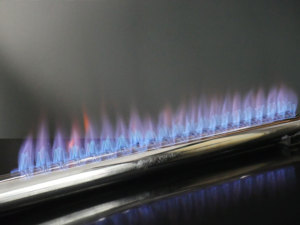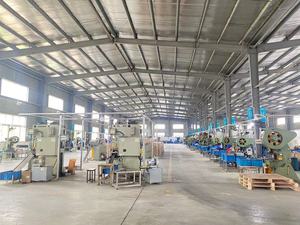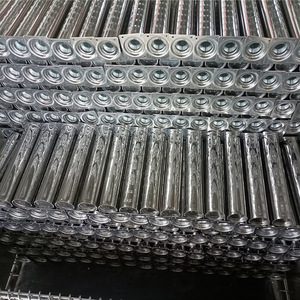
All categories
Featured selections
Trade Assurance
Buyer Central
Help Center
Get the app
Become a supplier

(1555 products available)




















A gas furnace burner tube is an integral part of a gas furnace that directs the ignition of gas to heat a home. There are three common types of burner tubes available to homeowners:
Rectangular or Straight Burner Tubes
This traditional burner tube design is typically made of cast iron or aluminum and is very common in older gas furnaces. For efficiency and cost, manufacturers use them to heat the gas evenly throughout the furnace.
Advantages: This type of burner tube is usually low cost, and gas furnaces with it tend to be cheap to repair/replace if the burner tube ever breaks.
Disadvantages: It doesn't create a large, spreading flame for heating, which can increase heating costs.
W or M-shaped Burner Tubes
This type of burner tube has the letter shape cast into it. It's more modern and provides a better flame pattern for heating gas. In doing so, it increases the gas furnace's efficiency and reduces gas usage.
Advantages: More powerful flames can heat the gas furnace more effectively and use gas more efficiently.
Disadvantages: Because of the more complex shape, making and replacing them tends to be more expensive.
Multihole Burner
As its name suggests, this burner tube has multiple holes in it instead of just one or two. It is the most advanced type of burner tube and has the potential to be very efficient.
Advantages: This burner tube can be programmed to change the size and number of flames it produces. It has the best efficiency of all three types of burner tubes.
Disadvantages: It's the most expensive type of burner tube to make and replace because of its complicated shape and design.
Homeowners should appreciate that gas furnace burner tube specifications will vary based on the make and model of the furnace. However, here are some common specifications.
Material
The gas furnace uses different materials for the burner tube, including stainless steel, galvanized steel, and aluminum. Stainless steel is resistant to corrosion and can withstand high heat. On the other hand, galvanized steel has a longer lifespan but is more affordable. Aluminum is lightweight and conducts heat quickly. As mentioned above, the materials will affect the burner's life span and efficiency.
Shape and Size
Generally, furnace tubes are straight with a wider diameter at one end. The size and shape will depend on the furnace it is installed in. For example, older models use straight tubes, while more modern ones have slender curved designs that resemble the letter S or L.
Orifice
This refers to the apertures or holes in the burner tube. Different furnace models will have varied sizes and numbers of holes. The holes affect how gas flows and the combustion of the furnace.
Gas burner tubes require regular care if they are to perform optimally and have long lifespans. Here are some maintenance tips:
Cleaning
Users should remove debris and dirt from the burner tube. They can use a soft brush or compressed air to do this. However, they shouldn't use anything that will scratch the burner's surface.
Weekly Inspection
Consider inspecting the burner tube weekly. Check for any signs of corrosion, blockages, or damage. If users notice anything unusual, they should contact a professional immediately.
The gas furnace burner tube is commonly used in gas furnaces. Some applications of gas furnace burner tubes are as follows:
Gas furnaces for heating
Gas furnace burner tubes are usually found in gas furnaces for heating buildings and homes. The thermiGAS furnacet burner tube in a gas furnace ignites and burns gas to provide sufficient heat for a room or whole house, depending on the size of the gas furnace. Once the desired temperature is reached, the gas furnace heater stops burning gas to maintain that temperature.
Gas furnaces for industrial heating
Industries such as agriculture, construction, food, mining, manufacturing, and oil use high gas flow rates. Therefore, they need large gas furnaces with large gas furnace burner tubes that can handle the larger gas flow.
Gas furnaces for water heating
Gas burner tubes heat water in gas furnaces for water. The gas furnace burner tube that heats the water functions similarly to the one in the gas heating furnace. The difference is that the gas burner tube that heats the water is usually located in the gas water heater.
Gas furnaces for cooking
Gas burner tubes cook at high temperatures. They come in different sizes and shapes, but the gas furnace burner tubes for residential cooking are generally smaller than those used in commercial kitchens. Gas furnace burner tubes heat gas stoves. Some are even flexible to fit into stoves with curved areas.
Industry furnaces
Gas furnace burner tubes used in gas ovens or industrial furnaces are usually longer. They also have a larger diameter. Some even come with multiple tubes. The gas oven or furnace is placed vertically or horizontally. It depends on the specific requirements of the industry or the place of use. Gas furnace burner tubes for industrial ovens or furnaces need to withstand higher heat and have a more durable quality.
Identify the needs of the target customers
Understand the needs of the customers who will use these gas burner tubes. Are they residential users looking for efficient heating solutions or commercial entities requiring high-capacity burners? Their specific requirements, such as desired heat output, fuel type, and safety features, should be considered.
Evaluate the variety of materials
Evaluate the selection of materials to ensure durability, heat resistance, and compatibility with different fuels. Consider the advantages and disadvantages of each material and choose those that align with the target market's preferences and requirements.
Ensure compliance with safety and environmental standards
Ensure that the products meet the necessary safety standards, minimizing the risk of accidents and prioritizing the well-being of users. Select gas furnace burner tubes that comply with environmental standards, contributing to the goal of sustainability and reducing environmental impact.
Consider adaptability to different furnace types
Consider the versatility of the selected burner tubes, which can be compatible with various types of furnaces. This adaptability ensures that customers with different setups can benefit from these burner tubes, thereby expanding the market share.
Think about the ease of installation and maintenance
Choose gas furnace burner tubes that are easy to install and maintain, as this can save users time and effort. Additionally, consider the cost performance of the products to ensure that users obtain reliable performance and value.
Q: What is the difference between gas furnace burners and oil furnace burners?
A: Gas burners are designed to mix natural gas or propane with air for combustion, while oil burners atomize and spray heating oil. This fundamental difference in fuel delivery and combustion methods results in distinct designs and functionalities.
Q: How do users know if the furnace burner has gone bad?
A: Several signs indicate a damaged furnace burner. These include visible corrosion or damage, uneven flame distribution, flickering or yellowing flames, increased noise levels, and a drop in heating efficiency. If any of these signs are observed, it's best to get the burner checked by an expert.
Q: Can dirty gas furnace burner tubes be cleaned?
A: In most cases, the furnace tubes can be carefully cleaned. However, it's essential to proceed with caution and consider professional assistance. These tubes feature delicate openings that can become clogged over time. Attempting to clean them without the right tools or expertise can cause damage.
Q: How long do gas burners for furnaces typically last?
A: With proper maintenance and care, furnace gas burners are built to last for 20-30 years or even longer. However, they can be susceptible to damage if proper care and maintenance are not applied, thereby reducing their lifespan.